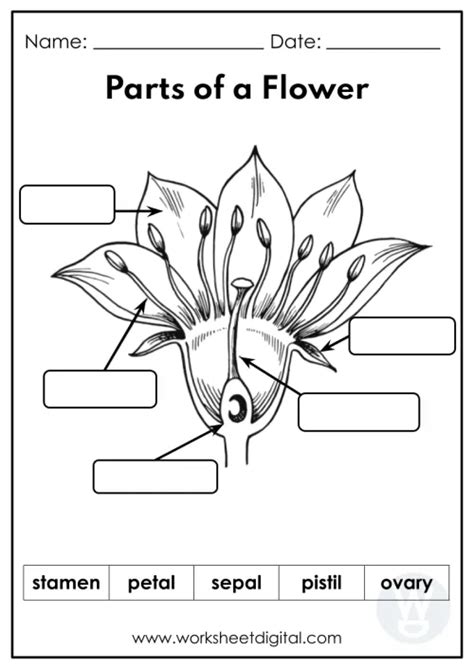Flowers are one of the most beautiful things in nature, and they come in all shapes and sizes. But have you ever wondered what the different parts of a flower are?

This worksheet will help you learn about the different parts of a flower, and it’s a great way to practice your science skills.
Instructions
- Download the worksheet. You can find the worksheet here.
- Print the worksheet. You can print the worksheet on regular paper or on cardstock.
- Cut out the flower parts. Use scissors to cut out the flower parts.
- Put the flower parts together. Match the flower parts to the correct labels on the worksheet.
- Glue the flower parts onto the worksheet. Use glue or tape to attach the flower parts to the worksheet.
Flower Parts
The main parts of a flower are:
- Petals – The petals are the showy part of the flower, and they attract pollinators.
- Sepals – The sepals are the leaf-like structures that surround the petals.
- Stamen – The stamen is the male reproductive organ of the flower. It consists of the anther and the filament.
- Pistil – The pistil is the female reproductive organ of the flower. It consists of the stigma, the style, and the ovary.
Other Flower Parts
In addition to the main parts, flowers can also have other parts, such as:
- Nectaries – Nectaries are glands that produce nectar, a sweet liquid that attracts pollinators.
- Bracts – Bracts are modified leaves that can be found at the base of the flower or on the flower stalk.
Fun Facts About Flowers
- There are over 250,000 different species of flowers in the world.
- The largest flower in the world is the Rafflesia arnoldii, which can grow up to 3 feet in diameter.
- The smallest flower in the world is the Wolffia angusta, which is only about 1 millimeter in diameter.
- Flowers are the reproductive organs of plants.
- Pollinators, such as bees and butterflies, help flowers to reproduce.
Conclusion
This worksheet is a great way to learn about the different parts of a flower. By completing this worksheet, you will be able to identify the different parts of a flower and understand their functions.
